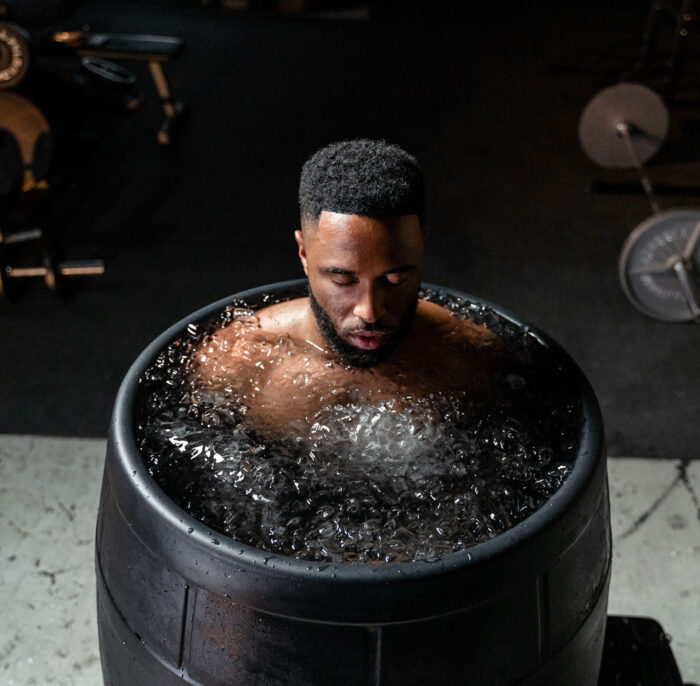
It’s pretty well known how popular ice baths are among athletes and people who like to exercise on the hardcore side. As uncomfortable as it might sound like, getting into an ice bath is actually quite a rewarding activity after an intense workout. Submerging your body in a bath of ice cold water for 10 to 20 minutes has seen some results that are game changing and is making it even more popular to anyone wanting to take advantage of the rewards.
Ice baths are a less extreme version of cryotherapy. With full body cryotherapy, you enter this special chamber, and the temperature goes as low as -85 degrees Celsius to -140 degrees Celsius. You stay in that chamber for no longer than 4 minutes. Ice baths are self-explanatory and are not nearly as freezing, the water is around an average of 10 to 15 degrees Celsius.
In this blog post, we will unfold information you should know if you are curious about getting into ice baths and want to reap the ice bath benefits.
At what point should you take an ice bath?
If you truly want to gain the advantages of taking an ice bath, you need to keep the timing of it all in mind. As soon as you finish your intense workout, whatever that may be, your muscles are sore and your body is hot. Going through a workout, your muscles are pushed to do things that will leave you aching and if you don’t take proper care, your muscles can end up injured. Jumping into an ice bath instantly after your workout will start the healing process at once. If you wait too long to get into the ice bath, the process will start already and you will miss out on the advantages.
What are the benefits?

Firstly, an ice bath helps the muscle recovery process. When you step into the super cold ice water, your blood vessels tighten and become smaller. After you get out those blood vessels will open up again rather quickly. This quick change in the blood vessel size will supply oxygen and nutrients to your muscles, which will help them recover after your tough workout.
Secondly, ice baths also aid in containing muscle soreness. We all know the feeling after coming back home from the gym after leg day, and we surely know the feeling a few days after. Barely being able to walk properly, walk up the stairs, and even if you try to sit down it feels like your legs are screaming at you. However, if you jump into an ice bath immediately after leg day, that inconvenient pain can lessen greatly, even completely at times.
Another great benefit of ice baths is the fact that it helps your body reduce the risk of getting injuries from copious amounts of regular working out. Because ice baths aid in your muscle recovery a lot quicker than normal, that means the next time you work out your muscles have already gone through an appropriate amount of recovery. This ensures that your body is way better prepared for your next workout.
What are the risks?
- Hypothermia: Ice baths can cause hypothermia if you don’t dress appropriately for the weather. If you become too cold, your body will start to shut down as heat is lost from the core. This can lead to confusion, seizures, and even death.
- Injuries: Ice baths can also cause injuries if you fall or bang your head while in the bathtub. The freezing water can cause frostbite or other injuries to skin and tissue.
- Drowning: Another risk of ice baths is drowning. If you get trapped in the bathtub or fall into the water, it’s easy to lose consciousness and drown.
How do you make an Ice Bath?

There are many ways to make an ice bath, but the most common is to fill a cooler, tub, or pool with cold water and add chunks of ice. Make sure the water is deep enough so that your body is submerged.
You can also use an electric ice bath. Fill a plastic storage container with about 1 inch of ice and plug it into an outlet. The colder the water, the better the results.
What should you avoid while taking an Ice Bath?
If you’re considering an ice bath, here are a few things to be aware of:
First, always consult your physician before taking one. Some people find that an ice bath can help relieve pain and inflammation, but it’s not for everyone.
Second, make sure the room is cold before getting in. Ice baths are safe to take up to 10 degrees Celsius (18 degrees Fahrenheit). However, if the room is colder than that, the water will freeze more quickly and cause more injury.
Third, avoid using a shower curtain as an ice bath barrier. The water WILL leak through the fabric and onto the floor. Instead, use a flat sheet or towel laid across the bottom of the shower enclosure. Alternatively, place a box or bucket beneath the shower head so that the water falls directly on your body.
Finally, be careful when getting out of the tub! If you’re cold enough and your muscles are tight from being in cold water for too long, they can become frozen together. Be gentle and use plenty of warm Epsom salts (or baking soda) to loosen them up before trying to move them.

Conclusion
As the temperatures start to drop and winter approaches, many of us are probably thinking about ways to stay warm. One popular way to do this is by taking an ice bath. Ice baths have a long history as a means of healing and restoring health, but before we get into all the details, it’s important to understand what they are and what they can do for you. If you’re looking for an icy cold soak that will help ease muscle aches and pain, or if you simply want to improve your overall wellness, then consider giving an ice bath a try next time the cold weather hits.
















